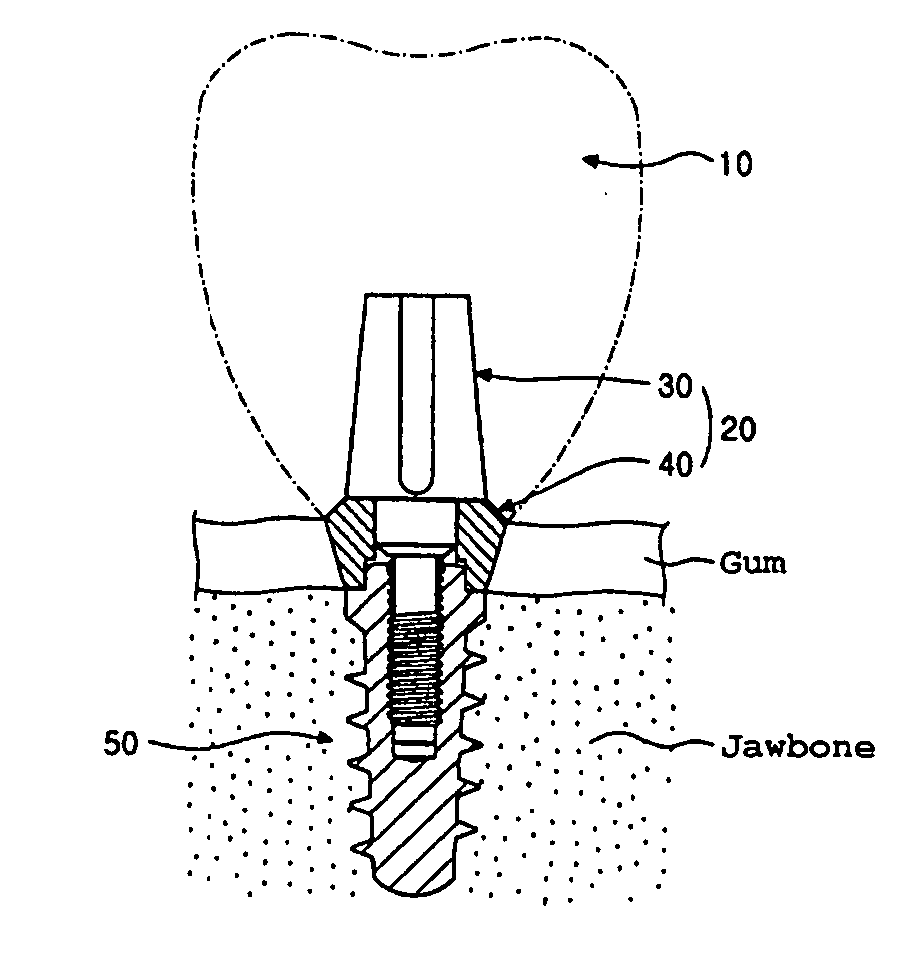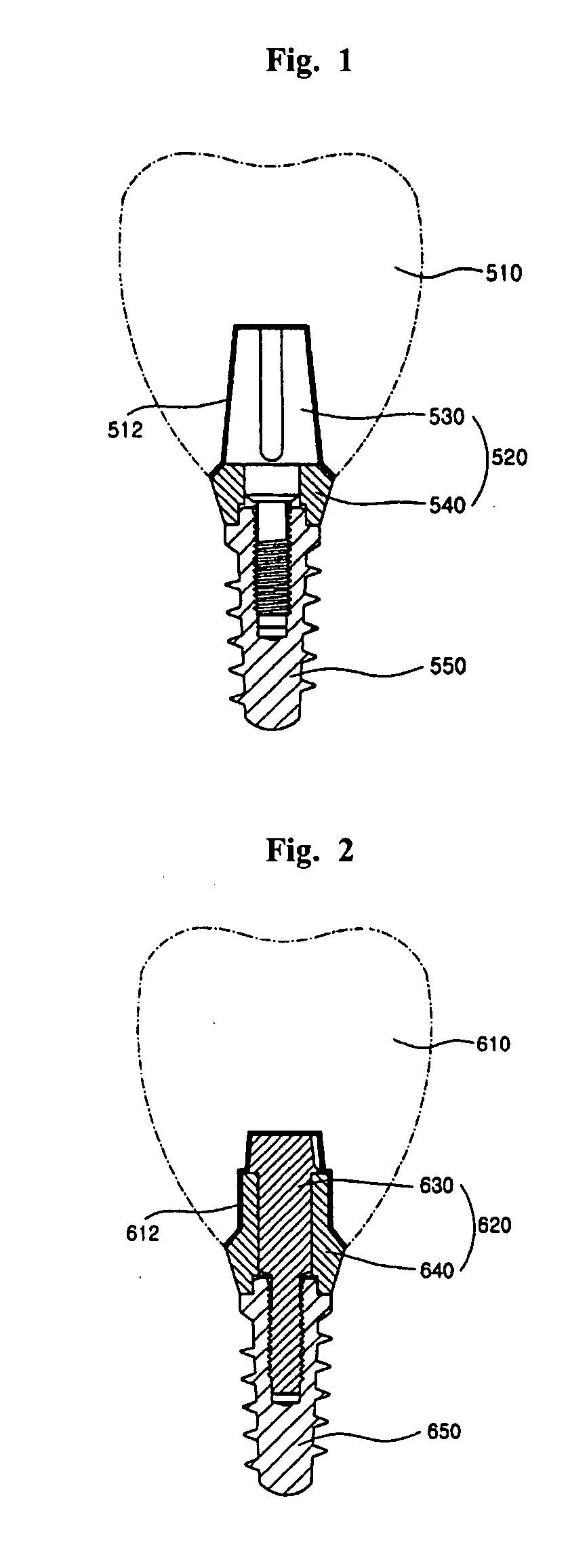Abutment of dental implant and aesthetic surface treatment method of the same
a technology of dental implants and aesthetic surfaces, applied in the field of massage devices, can solve the problems of improving the color of implants, and reducing the effect of cosmetic treatmen
- Summary
- Abstract
- Description
- Claims
- Application Information
AI Technical Summary
Benefits of technology
Problems solved by technology
Method used
Image
Examples
example
[0065] a) Fabrication of Abutment Using Zirconia Ceramic Material
[0066] A material containing more than 90 wt % of zirconia was shaped under high-pressure using a metal mold and sintered using an electric furnace at 1,400-1,500° C. to fabricate a ceramic abutment.
[0067] b) Property of Ceramic Abutment
[0068] The mechanical property of the fabricated ceramic abutment is shown in the table 4. The apparent specific gravity is 5.7 g / cm3, which is near the theoretical density (5.71 g / cm3). It was found to be a very dense structure having a porosity rate of 3.2 % and an absorption rate of 0.6. Furthermore, the fabricated abutment had a very high value of compression and bending strength of 425 MPa and 19.1 MPa respectively at a room temperature (25° C.). After testing the compression strength, the ceramic abutment showed a high mechanical strength and fracture toughness, and therefore, found to be suitable for a ceramic abutment for an artificial tooth.
TABLE 4Mechanical PropertyTest R...
PUM
 Login to View More
Login to View More Abstract
Description
Claims
Application Information
 Login to View More
Login to View More - R&D
- Intellectual Property
- Life Sciences
- Materials
- Tech Scout
- Unparalleled Data Quality
- Higher Quality Content
- 60% Fewer Hallucinations
Browse by: Latest US Patents, China's latest patents, Technical Efficacy Thesaurus, Application Domain, Technology Topic, Popular Technical Reports.
© 2025 PatSnap. All rights reserved.Legal|Privacy policy|Modern Slavery Act Transparency Statement|Sitemap|About US| Contact US: help@patsnap.com



